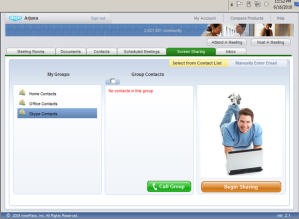Recently I installed Windows using a flash (Pen/Thumb) drive, since I couldn’t get hold of a blank DVD to burn the ISO into.
It might be helpful to you as well. Because we don’t need to burn DVDs to install OSs that are coming as ISOs anymore.
Follow the steps below.
1. Find a good USB Flash drive with required space.
Make sure you have backed up all the required data in the flash drive because the flash drive will be formatted.
2. Get a command prompt by typing “cmd” in the run window.
3. Type “diskpart” and press enter.
This will open up a new window for DiskPart utility, you need to use the following commands within the diskpart utility to make the flash drive bootable.
4. In the diskpart utility select the flash drive by typing “select disk 2”.
Use extra caution when selecting the flash disk since if you select the wrong disk you will loose all data of that disk. You can use “list disk” command within the diskpart utility to list all the disks attached to your computer. Note the disk referred here is a physical disk attached to the computer not a partition.
5. Clean the disk by using the command “clean”.
6. Create a primary partition inside the flash drive by typing in “create partition primary”.
7. Select the newly created partition by using command "select partition 1”.
8. Make the selected partition active by typing in the command “active”.
9. Then you need to format the partition by using the command “format fs=fat32” inside the diskpart.
Note that we are formatting the disk using FAT32 file system.
10. Use the command “assign” to assign a drive letter for the newly formatted drive, since we are not giving a drive letter it will get the next available drive letter automatically. Then exit the diskpart utility by typing in “exit”.
11. Now we need to copy the setup files to the flash drive.
For this we can use the good old xcopy command as of below.
“xcopy F:\*.* /s/e/f G:\”
In the above command I am coping the contents of the drive F (which is a virtual drive created by Power ISO) to drive G which is the flash drive I created.
The meanings of the flags I used are as follows.
“xcopy F:\*.* /s/e/f G:\”
F:\ – Source Drive
*.* – All Contents
/s – Copies directories and sub directories which are not empty
/e – This will add the empty directories also so now all the directories and sub directories will be copied even though they are empty
/f – Will show the source and destination file names while copying.
G:\ – Destination Drive
When xcopy completes you will have a flash drive which you can boot your computer, in my case I had a Windows 2008 R2 installer. You may even be able to copy the OS files to your flash drive and boot an OS with this method.
Then you may need to change your BIOS options and/or press function keys to let you boot from the flash drive.



















![image_thumb[1] image_thumb[1]](http://arjunachith.files.wordpress.com/2011/10/image_thumb1_thumb.png)




